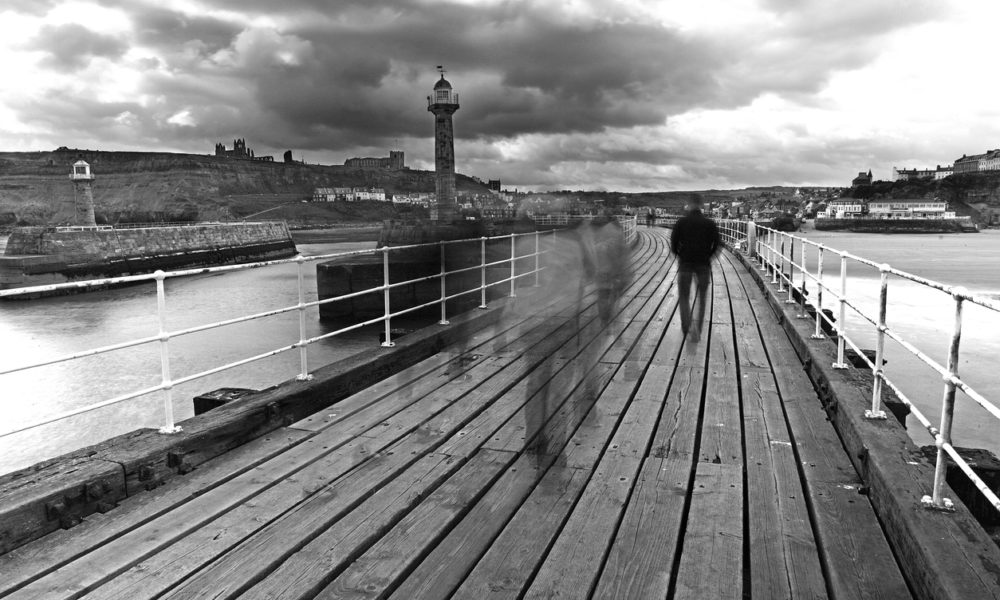Instagrammable Places in Whitby
Sharing holiday photos on social media platforms such as Instagram is one of the most popular ways to show off your recent holiday snaps. Gone are the days of waiting weeks for your photos to be processed, only to find they’re somewhat unremarkable and out of focus . Instagram have some brilliant editing features to store and display your photos and make your ‘posts’ impressive and inviting to your followers and Whitby has a number of instagrammable landmarks for you to visit and showcase on your page…
Whitby Abbey
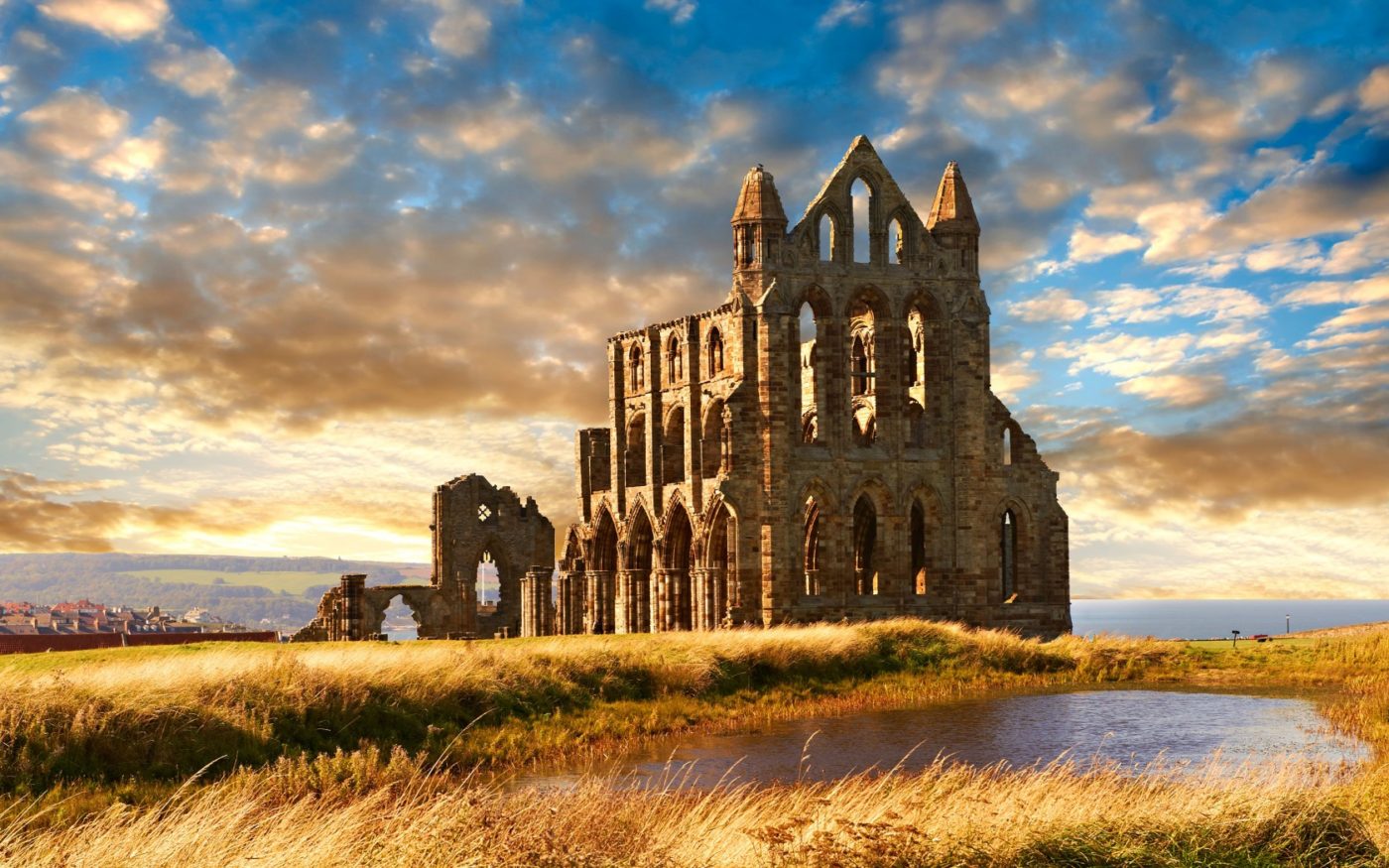
Founded in 657AD by the Saxon King of Northumbria, Whitby Abbey is a spectacular landmark that sits high on the West Cliff overlooking the town and the North sea. It’s been a settlement, a meeting place for historical clerics and the home of saints and poets. It’s also famous for being one of the most atmospheric visitor attractions along the North Yorkshire coastline and for inspiring Bram Stoker to write the world-famous novel ‘Dracula’.
Whitby Abbey was abandoned in 867AD after a Viking attack. The ruins that remain are the Church of the Benedictine Abbey founded by the Normans in 1220, in the Early English style of Gothic. In 1540 Henry VIII destroyed Whitby Abbey, and the abbey buildings fell into ruins. The Abbey’s west front was hit by German naval shelling in 1914.
The impressive ruins of Whitby Abbey have breath taking panoramic views of the town of Whitby and the surrounding coastline. From Whitby Harbour the abbey can be reached on foot via the 199 Abbey Steps up the East Cliff, and through the churchyard of St Mary’s Church. Alternatively, a well signposted road leads from the town’s outskirts to the cliff top location. There is
chargeable parking close to the abbey grounds. Near the abbey ruins are the remains of the Cholmley family mansion, built after Henry VIII’s suppression of the abbey. The impressive classical facade now houses an award-winning visitor’s centre. The centre displays fascinating finds from Anglo-Saxon, medieval and the Cholmley periods. There are many interactive activities and an audio tour of the abbey grounds. Whitby Abbey hosts many special events during the year such as pirate themed days. During the week leading up to Halloween, the Abbey is illuminated every evening. This is a stunning sight, with the gothic remains bathed in coloured lights. Costumed characters tell tales of the ‘darker side’ of Whitby’s past including the story of Dracula, witches and grave robbing.
Click here to visit the English Heritage website to learn more about it’s 2,000 year of history.
St. Mary's Church & The 199 Abbey Steps
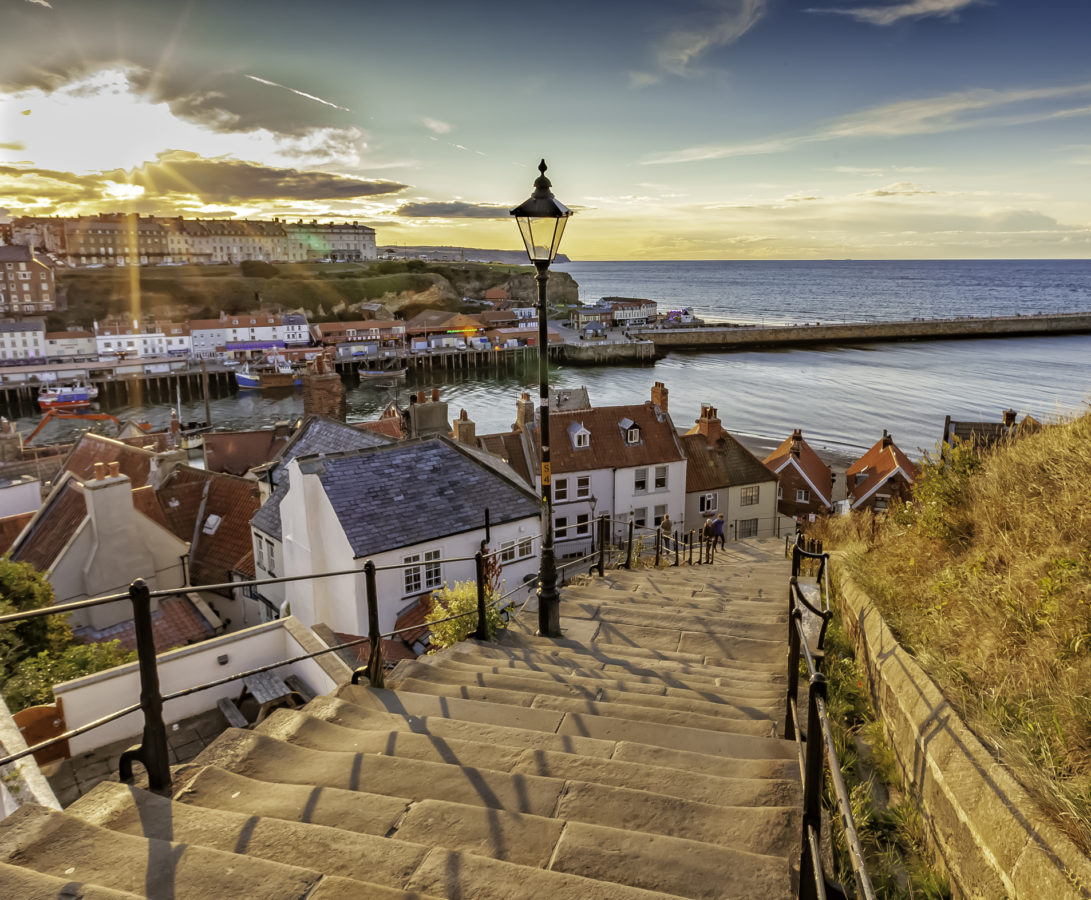
The first recorded use of the Whitby Abbey steps dates back to 1340, but they’re believed to be even older. The steps were originally made from wood but these were replaced with Sneaton stone in 1774. Why 199 steps? Well, it is thought they were used as a test of Christian faith – climbing the steps to worship in St Mary’s Church would prove that you were faithful.
St Mary’s Church perches upon the high cliff top, overlooking Whitby. At the top of the 199 Steps, you are first greeted by Caedmon’s Cross, a memorial dedicated to Caedmon, one of the earliest English poets. St Mary’s Churchyard surrounds the small church and is filled with aged and weathered tombstones and monuments to sailors, fishermen and lifeboat men. If you look closely you may see some graves marked with skull and crossbones.
The oldest parts of St Mary’s Church, the tower and basic structure are Norman, from around 1110 AD. However, there have been various modifications and extensions added over the centuries. The interior of the church is a mix of many different eras, although most is from the 18th century. It contains one of the most complete sets of pre-Victorian furnishings in England. The nave is filled with box pews, each furnished with a carpeted floor and upholstered cushions. A three-storey pulpit was built with ear trumpets that enabled the hearing-impaired wife of a rector to listen to her husband’s sermons.
The views from the churchyard are spectacular. On a clear day, most of Whitby’s West side is visible, with views over the harbour and along the coast to Sandsend. There are a number of benches to rest on your way up the 199 Steps and enjoy the panorama. What many tourists don’t realise is that the planks they sit on were used by pallbearers to place the coffin when they needed a break from carrying the dead to the church cemetery.
Whitby Whalebone Arch
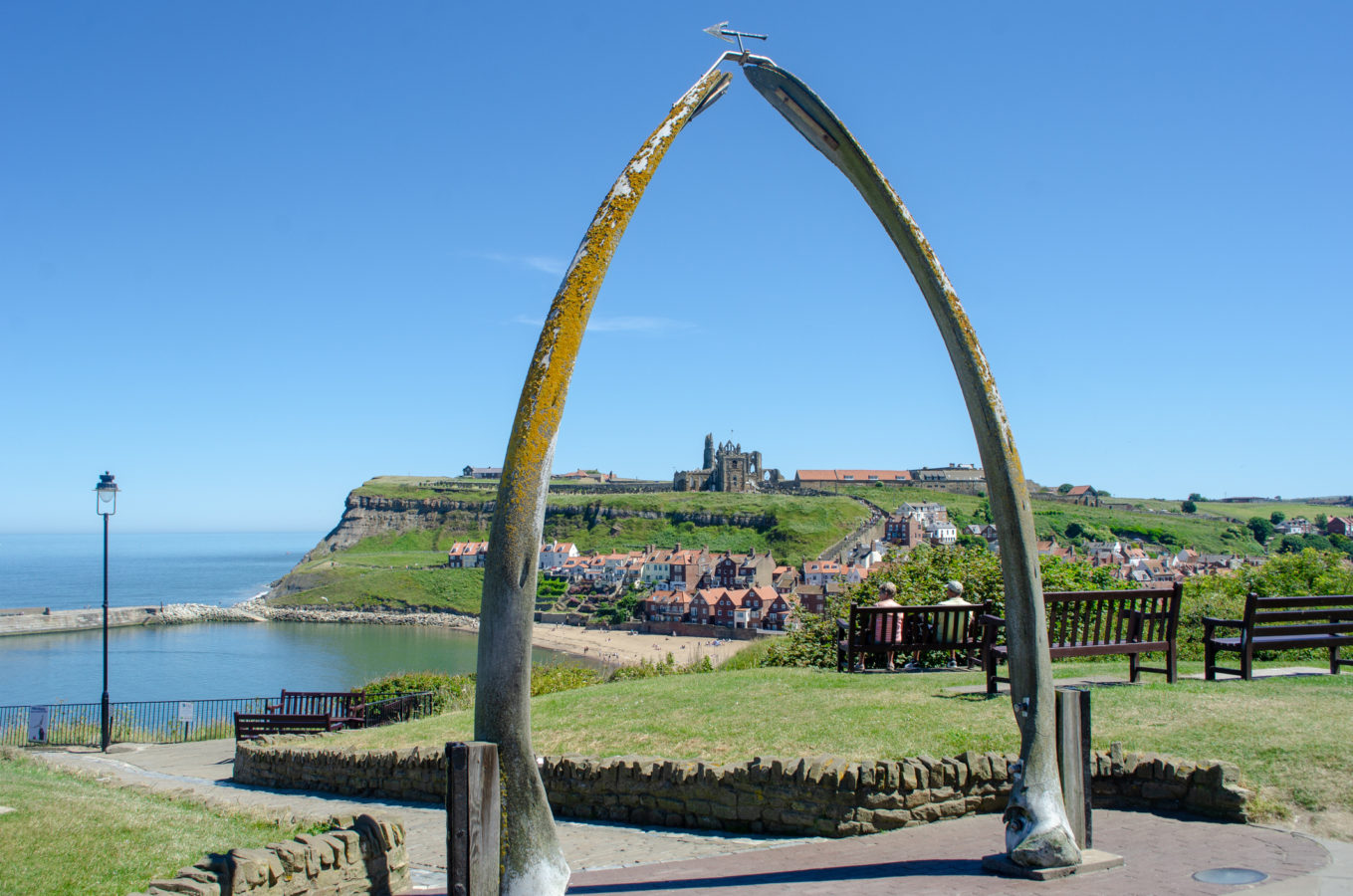
The original Whitby whale jaw bone arch was erected some time after 1853 and is now in the Whitby Archives & Heritage Centre. They were displayed to remind us of our great whaling history and they stood at a rather impressive 19ft high. Over time the bones deteriorated and a replica arch was presented to Whitby by Norway in 1963. In 2003 Alaska gifted us another replacement arch, this time from a bow head whale that was legally hunted on Alaska’s northern coastline.
Whitby Piers & Lighthouses
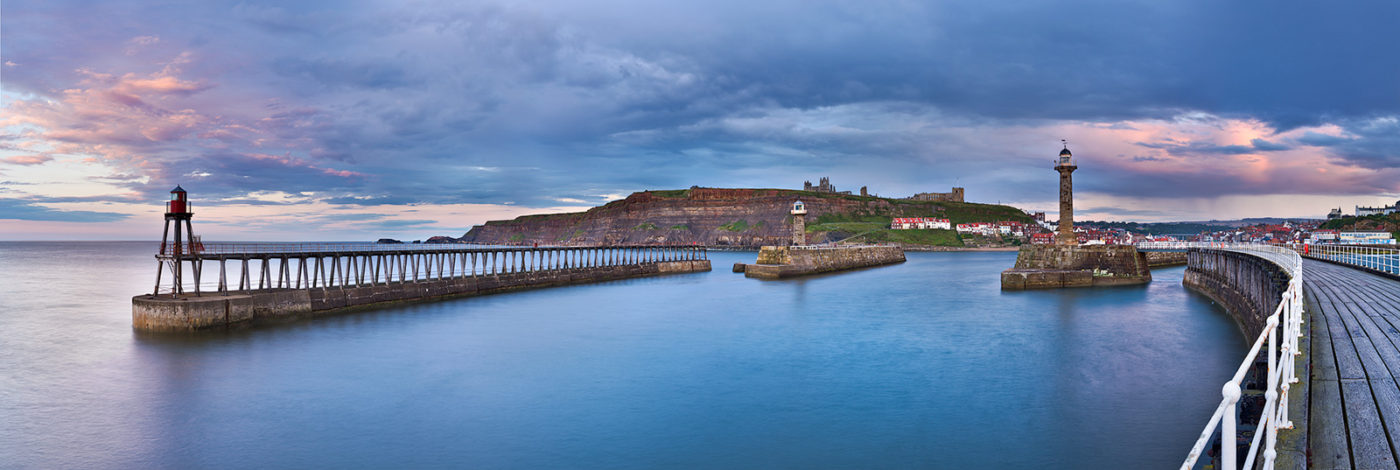
The two piers in Whitby have been in existence since before the 1500’s. By 1540, in the reign of King Charles I, the two oak piers (East and West) were replaced partially with stonework and further work was undertaken around the 1600’s. Both piers were rebuilt in 1735, each measuring approximately 183m, but by 1814 the West pier was further extended to reach a length of 309m. In 1905, both the piers had new pier ends built on, each of a length of 152m.
There are two lighthouses on the West pier, and two on the East pier. The larger, older lighthouse on the East pier was built of stone in 1854, and is a 55 feet high column tower, with lantern on top. This was replaced in 1914, by the new Whitby East pier light. The new pier was built as a wooden framework tower on ‘legs’. Currently operational, it displays an automated fixed red light (red for port). The West pier lighthouse was built in 1831 and is an 83 foot stone column tower with a lantern on top. This light still displays a green light when shipping is expected. This lighthouse too was replaced in 1914, by a wooden framework tower on ‘legs’. Only the older West pier lighthouse is open to the public, but on a limited number of days per year. The Whitby Tourist Information Centre is normally given details of the opening times shortly in advance. Telephone Number: 01723 383636.
Fishing is allowed on the lower tier of the West Pier only, although this can be closed off in stormy weather. The entire West and East piers are best avoided in very high tides and during rough seas. A new ornamental gate was erected and dedicated to Whitby seafarers, which is in place at the beginning of the newer extension. Along the older main West pier there is seating and lighting. There still remain some capstans and old mooring posts. A new addition at the beginning of the West pier, are fossil imprints in the paving.

